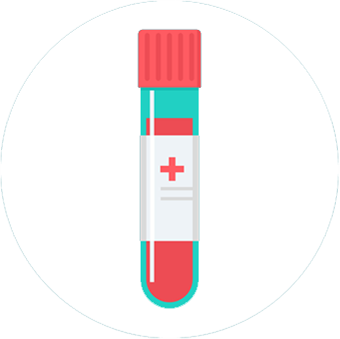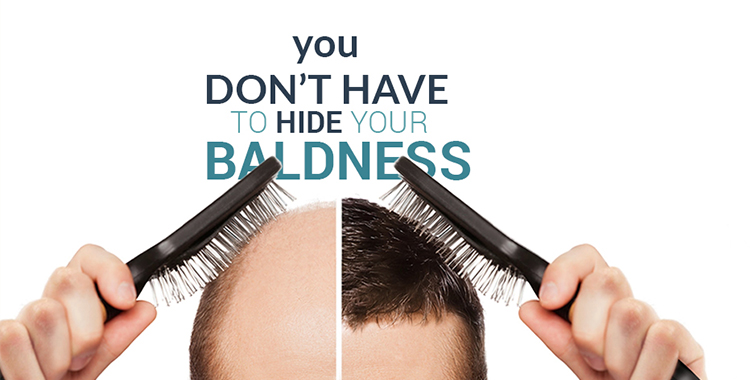Hair Transplant in Bangalore
For anyone living with baldness or thinning hair, it is enough to make you feel self conscious in any number of situations. Today’s modern hair transplant methods give superior, natural results!!!!!!!!!!!!!!!
Hair transplantation is one of the most rapidly evolving procedures in aesthetic surgery, accompanied by regular improvement in techniques. The recent advances in technology and the concept of using follicular unit grafts have made this procedure reach a new height. The ability to provide very natural-looking results has encouraged a larger number of balding men and women to opt for this surgical solution.
what is Hair Transplant ?
Harvesting one’s own donor hair from the sides or back of their scalp and implanting the individual hairs into the balding or thinning area.
Techniques in hair transplantation have evolved recently which make results look more natural. Hair restoration is one of the most exciting and innovative surgical fields in aesthetic surgery today. A precise appreciation of anatomy has allowed the use of follicular unit grafts. With better methods of harvesting and implantation, hair transplantation results represent a blend of art and science.
Hair transplantation is based on the ‘theory of donor dominance in androgenic alopecia.’ If a graft is taken from an area destined to be permanently hair-bearing and transplanted to an area suffering from male pattern baldness, it will, after an initial period of effluvium, grow hair in its new site as long as it would have at its original site. This is the scientific basis of hair transplantation surgery.
Although age is no bar for hair transplantation, the pros and cons of a transplant need to be carefully evaluated in the younger patients. Patients between 20 and 30 years of age should have a stabilized rate of hair loss before they are considered for hair transplantation.
The color, quality, and density of the donor hair, as well as the contrast between the hair and the skin colors, are important factors that affect the result. The lesser the contrast between the donor hair and the skin, the better is the result.It is also noted that frizzy, curly, or wavy hair are advantageous characteristics in transplanted hair.
Single hair grafts are used to create a natural hairline. The planning of the hairline is one of the most important steps in hair transplantation. The hairline is the most visible landmark and the quality of work of a surgeon is often judged by the quality of the hairline. The hairline shape also varies according to the variation of the shape of the face—round, oval or triangular. The patient's desires and constraints are also other factors that can affect the shape of the hairline.
How is it done?
Method: FUE – Follicular Unit Extraction (Scarless)
 Day care procedure (6-8 hours procedure)
Day care procedure (6-8 hours procedure)  No scar.
No scar.  Minimal Pain (Swelling for a week’s time)
Minimal Pain (Swelling for a week’s time)
 Natural look
Natural look
 Permanent results in 9 months
Permanent results in 9 months
Why Hair Transplantation?:
- Feel like all hope is lost? Fear Not !!
- A hair transplant will probably produce an improvement If you are developing Bald Patches.
- At Dr. Shetty's Cosmetic Centre, you will get the best hair to relocate benefits and you will see a complete transformation
Post -operative Instructions:
- Wear button down shirt that is comfortable.
- Any remaining crusts after two weeks will fall on its own.
- You can clean your scalp with easy and gentle hands using mild shampoo after 5 days.Numbness, tingling, or similar sensations along the top and back ofthe head, is common, and totally normal.
- You will be given painkillers and antibiotics for about 5 days.
Hair Anatomy
Anatomy and Histology of the Hair Follicle
Hair is a keratinous filament growing out of the epidermis. It is primarily made of columns of dead, keratinized cells. Strands of hair originate in an epidermal penetration of the dermis called the hair follicle.
Anatomy of hair can be further understood with the following terms :
Hair Shaft : Hair is the outer shaft of keratin material, the part that we all identify as hair conventionally
Follicle : The root of the hair is called a follicle and is the part buried under the skin. It is the follicle that produces the hair shaft.
Follicular Unit: THairs are not arranged singly in the scalp but are grouped in units consisting of one, two, three, four, or even more hair. A follicular unit is a collection of hair that are grouped in the skin.
Graft : A graft is a medical term that means tissue or organ taken from one part of the body and placed in another. A graft can be a skin graft, bone graft, cornea graft, kidney graft, etc. For hair transplant, a graft is the same as a follicular unit.
The histology of follicle can be summarized as follows : hair three layers :
Medulla : There is a central medulla or core (not seen in fine hairs), surrounded by a keratinized cortex and the outer third layer, which is highly keratinized and forms the thin hard cuticle on the outside of the hair. These keratinized layers are made by proliferating cells in the hair matrix at the base of the hair follicle.
Internal Root Sheath: Surrounding the hair, towards the base of the hair follicle, is the internal root sheath, which consists of keratinized cells from the hair matrix. The type of keratin here is softer than that of the hair and is the same as that found on the skin’s surface. This layer of cells disintegrates where the ducts of the sebaceous gland enters the follicle. The ducts of the sebaceous glands discharge sebum onto the hair.
External Root Sheath: The external root sheath surrounds the internal root sheath. This is a tubular invagination of the epidermis which doesn’t take part in hair formation. It is separated from the surrounding connective tissue by a glassy basement membrane.
At the hair follicle/hair bulb base, there is a dermal papilla, which contains the blood supply for the hair. The hair matrix, which contains the proliferating cells that generate the hair and the internal root sheath, is just above the dermal papilla and is separated from it by a basement membrane. Like the epidermis basal layer, the hair matrix cells proliferate and move upwards, gradually becoming keratinized to produce the hair.
A small bundle of smooth muscle cells called arrector pili muscle is associated with the hair follicle. This muscle’s contraction elevates the hair, forms goosebumps, releases heat, and helps sebum be released from the gland into the duct.
Hair Color
-
Hair Growth Cycle
The production of hair is not continuous but cyclic. Hair Growth Cycle consists of three main stages:
Anagen Phase: In this phase, the hair starts growing from the follicle root. This phase lasts for 1,000 days, i.e., 2-5 years, and during this time, the matrix cells divide, become keratinized, and hair is produced. Hair grows approximately 10-15 cm per year. In general, the length of any human being’s hair is unlikely to grow more than one meter.
At any given point in time, approximately 85-90% of all hair is in the anagen phase.Anagen Phase: This a transitional phase of regression that lasts 2-3 weeks on an average. The hair stops growing in this phase and detaches itself from the root and hence from the blood supply. The hair follicle shrinks to about 1/6th of the regular length. The lower part is destroyed, and the dermal papilla breaks away to enter into a resting phase. At any given point in time, less than 5% of the hair is in the catagen phase
At any given point in time, approximately 85-90% of all hair is in the anagen phase.
Telogen Phase:During the Telogen phase, which lasts for several months, the cell division stops, hair growth ceases, and the hair’s attachment to the base of the follicle becomes progressively weaker. Finally, as a result of ordinary traction due to combing, washing, hair’s own weight, or a push by a new, growing hair, the old hair is eventually shed and discarded.
At any given point in time, approximately 10-15% of all hair follicles are in the telogen phase.
Hair Loss Treatment
Main Hair Loss Restoration Options Available Today:
- 1. Medical hair loss restoration options
- 2.Non-medical options for hair loss restoration
ALTERNATIVE HAIR DONOR AREAS IN HAIR TRANSPLANTATION
If the donor area in the back of the head is not sufficient, hair follicles can be obtained from the beard or from the body and can be transferred into the hair loss areas. Facial hair develop fast and grow back at remarkably high rates, exceeding 95%. Because of the specific texture of facial hair (they are wilder and curlier compared to scalp hair) and the fact that the shafts are twice as thick as scalp hair, they are not suitable for placement in the front hairline. However, they are extremely useful for the density of the middle zone or the crown and for the restoration of postoperative strip scars. Body hair is another alternative resource of hair follicles for Direct hair implantation, especially in men who have rich body hair, but insufficient donor site on the back of the head. All body hairs can be used as donors in hair transplants, the chest, the back, the arms, the legs, the pubic areas, etc. The most reliable and potentially usable area for harvesting body hair grafts are the chest and the sternum. The final regrowth rate of body hair is unpredictable and usually ranges from 70 to 80%. Due to different life cycle of body hair, which progresses more slowly than the life cycle of scalp hair, body hair regrowth is slower and may even take two years to be completed.
Dr Shetty’s hair transplantation, transfers individual hair follicles one by one, from donor site to hair loss areas and is currently the ideal method for male and female hair loss restoration
PRP Hair Transplant
What is PRP? PRP hair treatment stimulates hair growth and increases hair density PRP is a non-surgical treatment which is used treat hair thinning, to arrest hair loss and promote hair growth. It takes place by injecting plasma into the scalp, with the objective of stimulating the follicles. The PRP is activated with growth factors to stimulate inactive or newly implanted hair follicles into an active growth phase. The regular use of PRP prolongs the Anagen phase of the hair growth cycle.
How PRP Works?
A small amount of blood (less than 50 ml) is taken from the body and centrifuged at a high speed to separate the plasma. The PRP is then activated with DNA activators (thrombin) and enriched with calcium ions (e.g. calcium chloride) and injected into the area which is suffering from hair loss in order to stimulate hair growth.
HARVEST
A small amount of blood is taken

SEPARATE
PRP is seprated from the blood

ACTIVATE
PRP is activated

INJECT
PRP is injected into the scalp
Strict protocols are followed to ensure the highest quality of results each time. Special attention is given to ensure that the centrifugation of blood is done under a temperature controlled environment.
The quantity of blood extracted, the centrifugation speed, anticoagulant used, etc, all play an important role in multiplying the plasma to 5x, which is the highest in the industry. This highly concentrated platelet rich plasma (PRP) is thereafter injected into the scalp which promotes hair growth and arrests hair fall.
PRP Treatment Results
PRP is an effective non-surgical treatment for people suffering from hair loss. It is especially helpful in early stages of alopecia. Plasma injected into the scalp contains essential growth factors, which makes hair strong and healthy. Three sessions of PRP treatment performed in 6-8 weeks are ideal for quality results.



